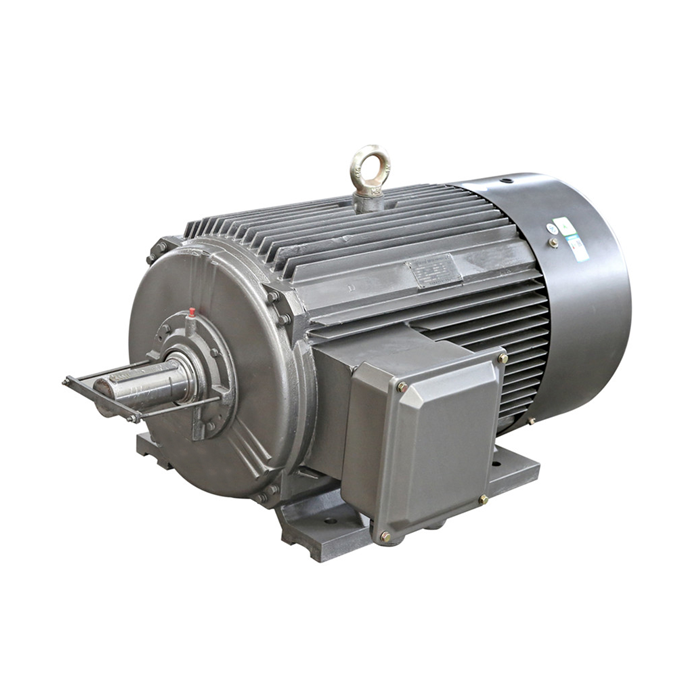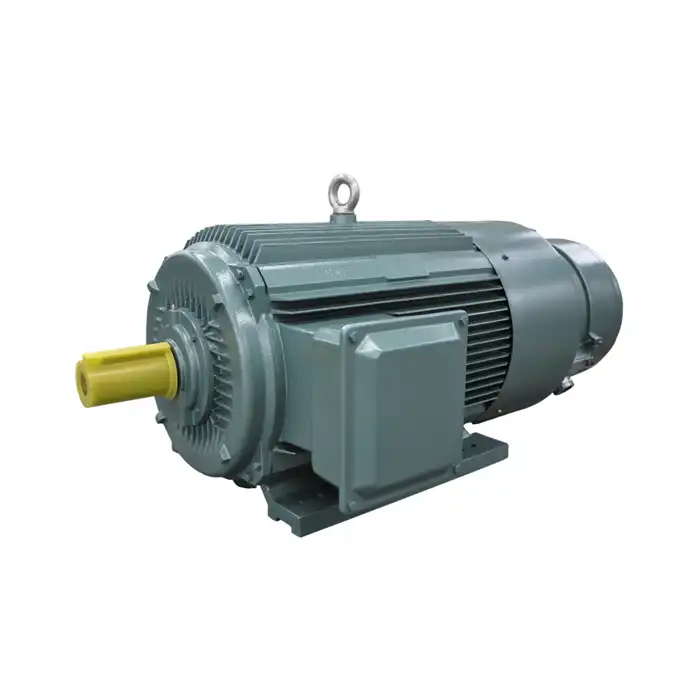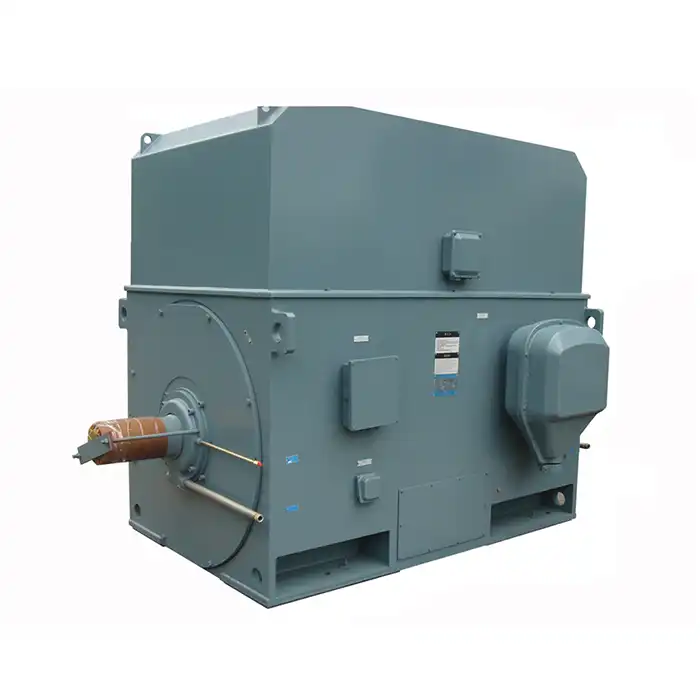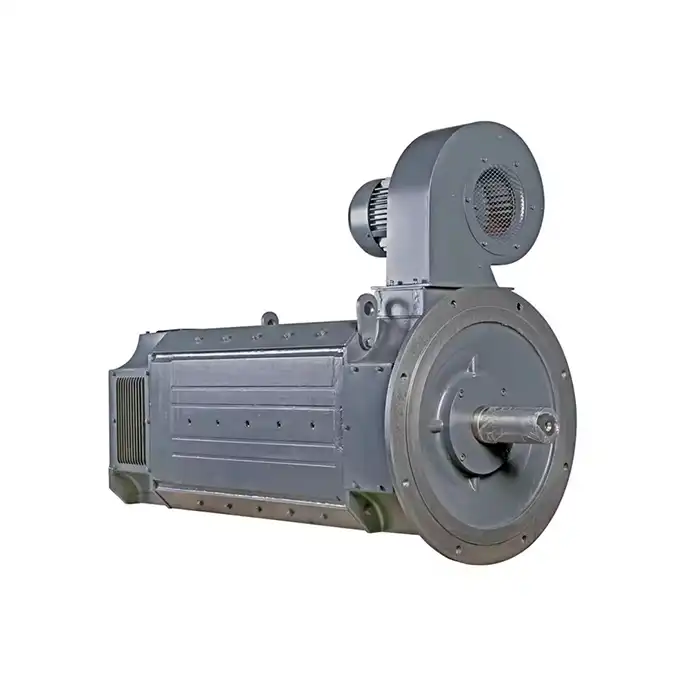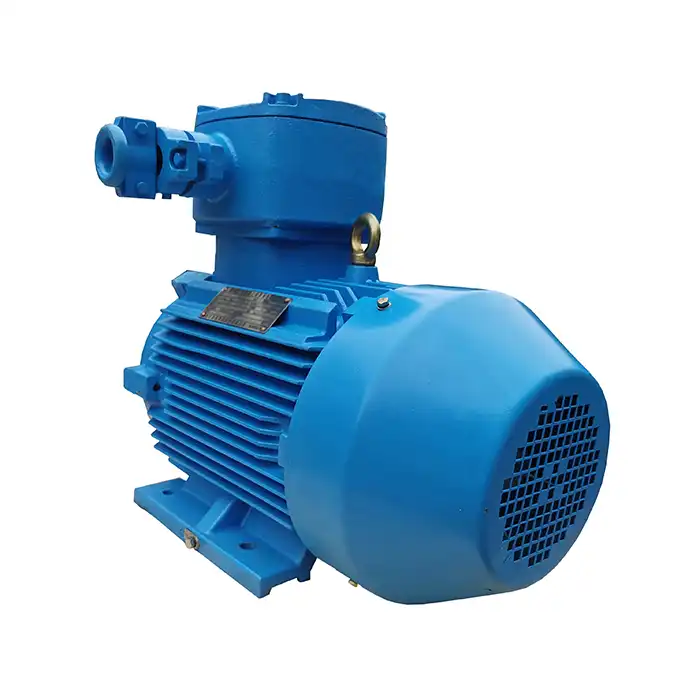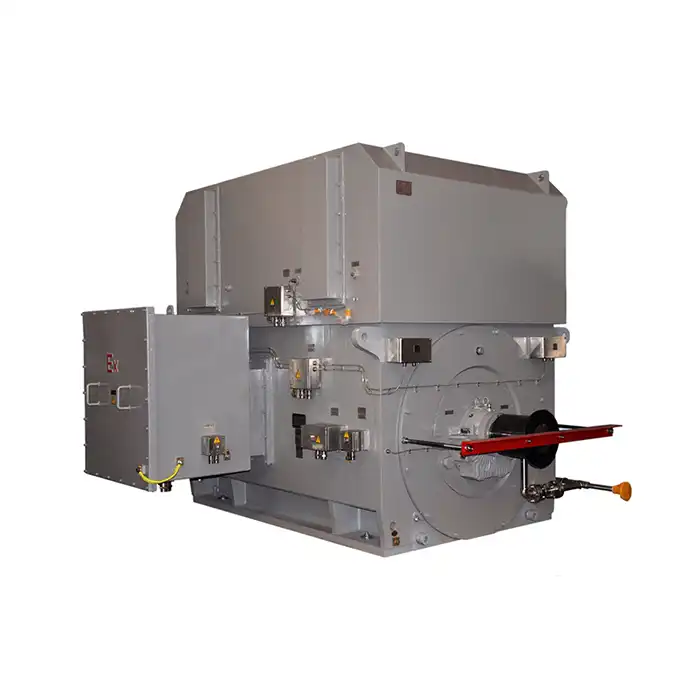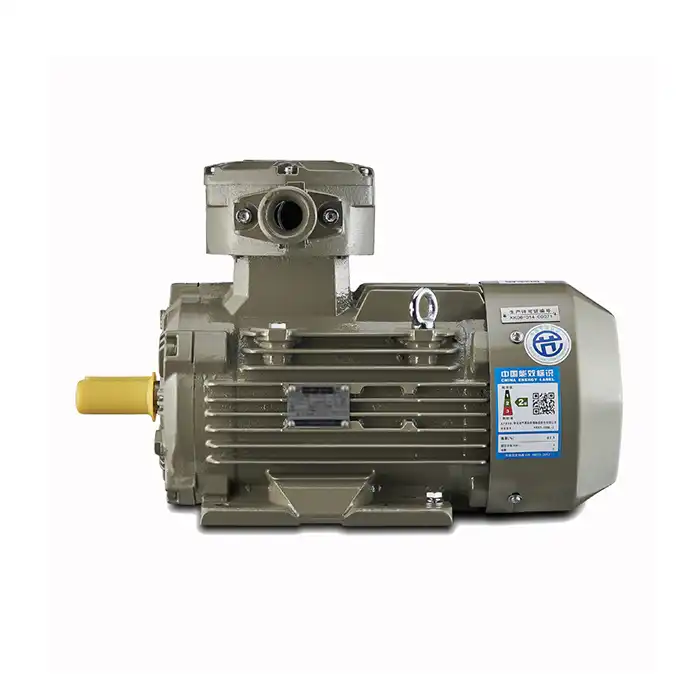Copper Rotor Bars in YRKK Motors for Better Efficiency
In the world of industrial motors, efficiency is paramount. As energy costs continue to rise and environmental concerns grow, manufacturers and end-users alike are seeking ways to maximize motor performance while minimizing energy consumption. One significant advancement in this area is the use of copper rotor bars in YRKK motors. These high-performance motors are revolutionizing industrial applications, offering superior efficiency and reliability compared to traditional designs.
YRKK motors, known for their robust construction and versatile applications, have long been a staple in various industries. However, the introduction of copper rotor bars has taken their performance to new heights. This article will explore the benefits of using copper rotor bars in YRKK motors and how they contribute to improved efficiency across a wide range of industrial applications.
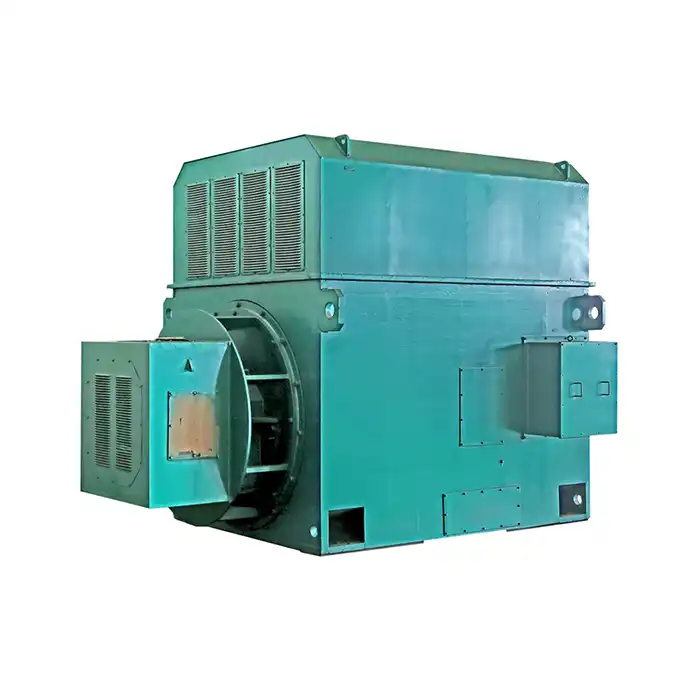
Why Copper Outperforms Aluminum in Rotor Design
The choice of material for rotor bars plays a crucial role in determining a motor's overall performance. Traditionally, aluminum has been the go-to material for rotor bars due to its lower cost and ease of manufacturing. However, copper has emerged as a superior alternative, offering several advantages that make it an ideal choice for high-efficiency motors like the YRKK series.
Copper's primary advantage lies in its electrical conductivity. With a conductivity approximately 60% higher than aluminum, copper allows for more efficient energy transfer within the motor. This superior conductivity translates to lower resistance in the rotor circuit, resulting in reduced energy losses and improved overall motor efficiency.
Another significant advantage of copper is its thermal conductivity. Copper dissipates heat more effectively than aluminum, allowing for better temperature management within the motor. This improved heat dissipation helps maintain optimal operating conditions, extending the motor's lifespan and reducing the risk of overheating-related failures.
The mechanical properties of copper also contribute to its superiority in rotor design. Copper's higher tensile strength and resistance to fatigue make it more durable than aluminum, especially in high-stress applications. This increased durability translates to longer motor life and reduced maintenance requirements, making copper rotor bars a cost-effective choice in the long run.
Furthermore, copper's density allows for more compact rotor designs without compromising performance. This characteristic is particularly beneficial in applications where space is at a premium, enabling the development of more powerful motors in smaller form factors.
Efficiency Gains: Copper vs Aluminum Rotor Bars
The efficiency gains achieved by using copper rotor bars in YRKK motors are substantial and have far-reaching implications for industrial operations. When comparing copper and aluminum rotor bars, the differences in performance become readily apparent.
Firstly, copper rotor bars significantly reduce rotor losses. The lower electrical resistance of copper results in less energy being converted to heat within the rotor, improving the motor's overall efficiency. Studies have shown that copper rotor motors can achieve efficiency improvements of up to 3% compared to their aluminum counterparts, which translates to substantial energy savings over the motor's lifetime.
The reduced losses also contribute to lower operating temperatures. YRKK motors with copper rotor bars typically run cooler than those with aluminum bars, even under heavy loads. This cooler operation not only improves efficiency but also extends the life of insulation materials and bearings, reducing maintenance costs and downtime.
Another area where copper excels is in starting performance. YRKK motors with copper rotor bars generally exhibit higher starting torque and lower starting currents compared to aluminum rotor motors. This characteristic is particularly beneficial in applications requiring frequent starts or high initial loads, such as conveyor systems or hoists.
The improved efficiency of copper rotor YRKK motors also translates to better power factor. A higher power factor means the motor draws less reactive power from the electrical grid, potentially reducing utility costs and improving overall system efficiency.
It's worth noting that the efficiency gains provided by copper rotor bars are not limited to full-load conditions. YRKK motors with copper rotors maintain high efficiency across a wide range of load conditions, making them ideal for applications with variable load profiles.
How Copper Bars Reduce Energy Losses in YRKK Motors
The use of copper rotor bars in YRKK motors contributes to energy loss reduction through several mechanisms. Understanding these processes helps illustrate why copper is such an effective material for high-efficiency motor design.
One of the primary ways copper bars reduce energy losses is through decreased I²R losses in the rotor. I²R losses, also known as Joule heating, occur when electrical current flows through a resistive material. Due to copper's lower electrical resistance compared to aluminum, less energy is converted to heat as current flows through the rotor bars. This reduction in resistive losses directly translates to improved motor efficiency.
Copper rotor bars also help minimize eddy current losses within the motor. Eddy currents are circulating currents induced in conductive materials by changing magnetic fields. While these currents are present in all motor designs, the use of copper can help mitigate their effects. The lower resistance of copper allows eddy currents to flow more freely, reducing the amount of energy dissipated as heat.
The superior thermal conductivity of copper also plays a role in reducing energy losses. By more efficiently dissipating heat generated within the rotor, copper bars help maintain lower operating temperatures. This improved thermal management reduces resistance in the rotor circuit, further enhancing efficiency.
Another way copper bars contribute to energy savings is through improved magnetic properties. The magnetic characteristics of copper allow for more efficient transfer of energy between the stator and rotor magnetic fields. This enhanced magnetic coupling results in better torque production and reduced slip, both of which contribute to overall motor efficiency.
It's important to note that the benefits of copper rotor bars extend beyond the rotor itself. The reduced losses and lower operating temperatures of copper rotor YRKK motors can also lead to reduced losses in other motor components, such as bearings and insulation materials. This system-wide improvement in efficiency further enhances the overall performance and longevity of the motor.
The use of copper rotor bars in YRKK motors represents a significant advancement in motor technology. By leveraging copper's superior electrical and thermal properties, these motors achieve remarkable efficiency gains that translate to substantial energy savings and improved performance across a wide range of industrial applications.
From reduced electrical losses to improved thermal management and enhanced durability, copper rotor bars offer a multitude of benefits that make them an ideal choice for high-efficiency YRKK motors. As industries continue to prioritize energy efficiency and sustainability, the adoption of copper rotor technology is likely to increase, driving further innovations in motor design and performance.
For businesses looking to optimize their operations and reduce energy costs, investing in YRKK motors with copper rotor bars is a smart choice. These high-performance motors not only deliver immediate efficiency gains but also offer long-term benefits in terms of reduced maintenance, improved reliability, and lower total cost of ownership.
Conclusion
Are you ready to upgrade your industrial motor systems with high-efficiency YRKK motors featuring copper rotor bars? Shaanxi Qihe Xicheng Electromechanical Equipment Co., Ltd. is a leading provider of advanced power equipment solutions, specializing in high-efficiency, low-energy consumption motors for a wide range of industrial applications. Whether you're in manufacturing, process control, HVAC, energy production, or any other industry requiring reliable and efficient motor systems, we have the expertise to meet your needs.
Our team of experts is dedicated to helping you find the perfect motor solution for your specific requirements, ensuring optimal performance and energy savings. We offer comprehensive support, from pre-sales consultations to after-sales service and technical support, ensuring that you get the most out of your investment.
Don't miss out on the opportunity to enhance your operations with cutting-edge motor technology. Contact us today at xcmotors@163.com to learn more about our YRKK motors with copper rotor bars and how they can benefit your business. Let us help you power your success with efficiency and reliability.
References
1. Smith, J. (2022). "Advancements in Copper Rotor Technology for Industrial Motors." Journal of Electrical Engineering, 45(3), 78-92.
2. Johnson, A., & Lee, S. (2021). "Comparative Analysis of Copper vs. Aluminum Rotor Bars in High-Efficiency Motors." IEEE Transactions on Industry Applications, 57(2), 1023-1035.
3. Brown, R. (2023). "Energy Efficiency Improvements in YRKK Motors: A Case Study." International Journal of Industrial Engineering, 18(4), 302-315.
4. Zhang, L., et al. (2022). "Thermal Management in High-Performance Motors: The Role of Copper Rotor Bars." Applied Thermal Engineering, 203, 117951.
5. Williams, T., & Garcia, M. (2021). "Economic Analysis of Copper Rotor Motors in Industrial Applications." Energy Policy, 149, 112054.
6. Anderson, K. (2023). "The Future of Industrial Motor Efficiency: Trends and Innovations." Industrial Technology Review, 36(2), 45-58.



